How a fitness guru helped transform hockey prodigy Connor McDavid
BY MARTY KLINKENBERG
AURORA, ONT. — The Globe and Mail
Published Wednesday, Sep. 09, 2015 9:24PM EDT
Last updated Wednesday, Sep. 30, 2015 1:59PM EDT
Nearly every day this summer, hockey’s most exciting prospect in at least a decade took a nap.
It is not the vision that comes to mind when one thinks of the prodigy whose name is mentioned in the same breath as Sidney Crosby and Wayne Gretzky.
A blur on the ice, Connor McDavid is so fast he blows past opponents as if their skates are stuck in quicksand. He has been clocked stick-handling the puck at 40 kilometres an hour. But a teenage boy on the cusp of his first NHL season needs his sleep to become a man.
“I take a lot of naps,” said the 18-year-old, who has learned the importance of rest as he has trained this summer. “My friends work during the day, so it’s easy for me to come home and sleep for a few hours.”
Chosen on June 26 with the first selection in the draft, McDavid is poised in a few short weeks to make his debut with the Edmonton Oilers.
Transforming him from a lean adolescent into a game-ready professional has been a daunting and complicated mission. Gary Roberts, a former player turned fitness guru, was engaged to be the architect of the plan.
For McDavid, the past 10 weeks have been gruelling. Before that, he and Roberts spent three long summers laying the groundwork.
“My body has gone through a lot of changes over the past four years,” McDavid said one afternoon in mid-August after posing for a magazine cover photo and skating with other NHL players at a promotional event. “I was just hitting puberty when I started, so some of those things were going to occur naturally. But the hard work I have done with Gary has speeded up the process. I have never felt this strong and this powerful.”
Five mornings a week, McDavid arrived by 7:15 at the fitness centre in the Toronto suburbs that Roberts uses as his summer base.
After dining on oatmeal, eggs and bacon or salmon prepared by a chef, the sport’s most anticipated newcomer headed for the weight room for as long as two hours.
When he finished there, he joined a handful of fellow players in a 90-minute on-ice training session every other day. First, they skated in reverse. Then, they drove the puck down the rink at blistering speed. They did it until they were fighting to catch their breath, bodies hunched over and hands on knees.
Most days it was 11:30 before McDavid left for home, legs heavy and muscles sore. He understands it is the work that must happen before the real work begins.
He was headed into Grade 10 when he met Roberts, a veteran of 21 NHL seasons with bulging muscles and a history of turning at least one talented young runt, Steven Stamkos, into a well-chiselled superstar.
“I was 15 and so nervous about meeting him,” McDavid said of Roberts.
“I was scared of what he might think and how he would judge me. But I was young then, and this is a different time now. As I have gotten to know him, I have realized Gary is very open and understands people are different. You have to look at Gary and the track record he has. I am very lucky to be around a guy like that.”
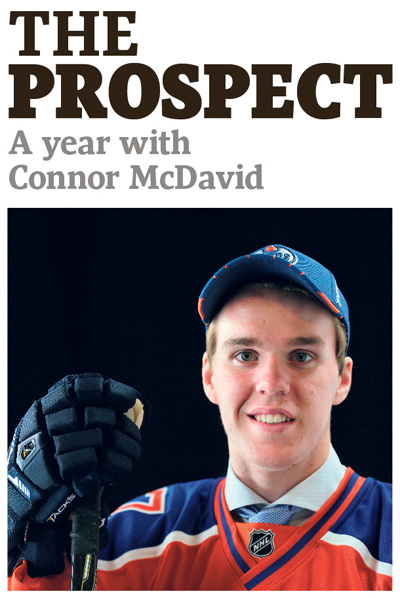
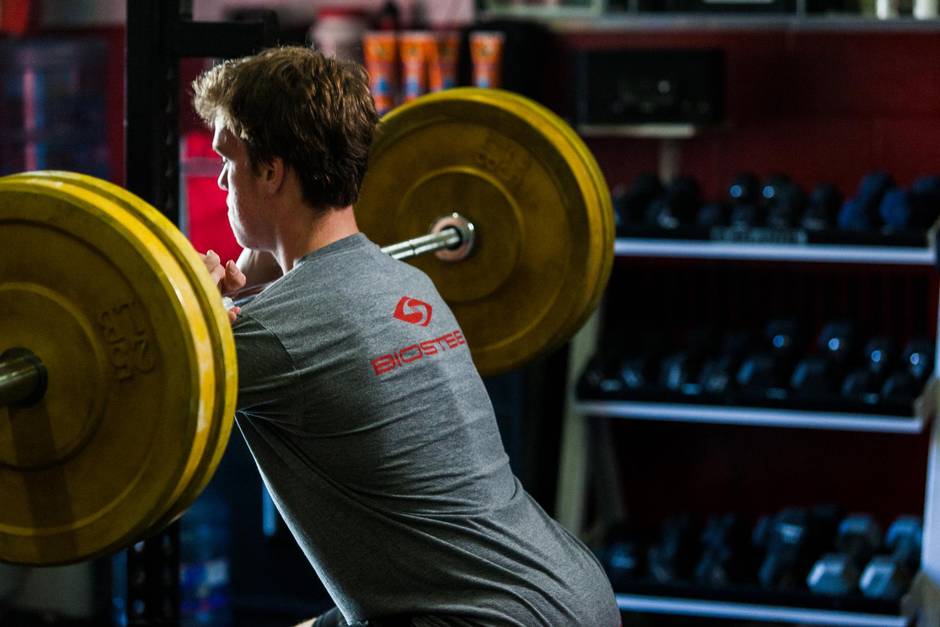
‘Protect this kid’
Introduced by an agent at the Orr Hockey Group, Roberts began working with Connor McDavid the summer before he entered the Ontario Hockey League. His first impression of his new charge: Not only was McDavid underage, but a rawboned 5-foot-10 and 166 pounds.
“He was pretty slight and did not have a lot of off-the-ice training under his belt,” the no-nonsense trainer said. “I remember calling the Erie Otters and saying, ‘You better make sure you have someone to protect this kid.’ That was my fear for Connor.”
A three-time all-star who retired following the 2008-2009 season, Roberts amassed 910 points and accumulated 2,560 penalty minutes during his career. He was skilled and strong, but more than that he was durable.
Once, he retired due to a serious neck injury – only to sit out a full season and then play for another 11 years. Along with two neck operations, he also had surgery on both shoulders and pins placed in his thumbs. A scar zigzags along his left leg where a torn quadriceps muscle was repaired.
“I was tough mentally, and in the end that taught me a lot about training players,” Roberts said. He is 49 and still looks as if he could strap on skates, yank a jersey over his head and crush someone against the boards. “I had to reinvent myself physically to withstand the stress of the game, and I had to come back that much stronger to succeed. My passion became preparation.”
Over the summer, Roberts supervised 26 NHL players as they trained at St. Andrews College in Aurora, an affluent bedroom community an hour north of Toronto. It is an easy drive for McDavid, who lives with his family in neighbouring Newmarket.
It is not unusual for several groups to work out at the same time under Roberts’ watch, with Stamkos, Phil Kessel, James Neal and McDavid clanking weights in the fitness centre, and Derek Roy, Mark Scheifele and Matt Beleskey engaging in fast-paced skating drills.
Inside the La Brier Family Arena, rock music reverberates from the weight room and the air fills with a kish-kish sound as players streak past on thin steel blades. “When Connor saw Steven Stamkos and [James] Neal here a couple of years ago, he said, ‘I can’t ever imagine being that strong and that fit,’” Roberts said. “I told him that if he worked hard enough, he could do it.”
McDavid acknowledged the urgency to get stronger and bulkier this summer even after he scored five goals in a scrimmage at the Oilers’ rookie orientation camp.
“There is a lot of work to be done,” he said, undershirt soaked with sweat. “I am going to work hard this summer and see where I am in September. I need to improve my physical play and get as big and strong as I can.”
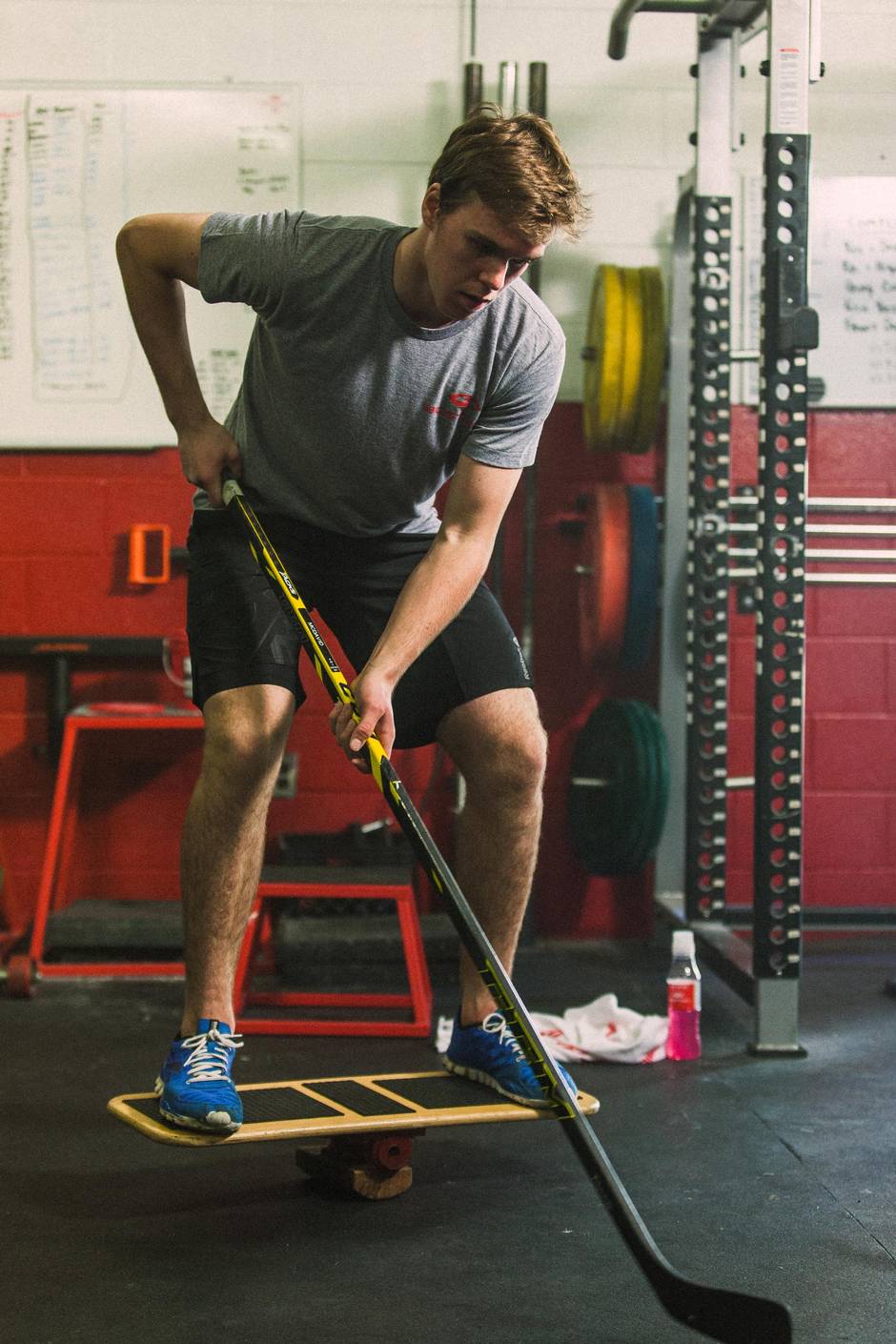
‘Every little muscle’
Four years ago, Roberts and his staff created a summer exercise regimen for McDavid that limited him to light weight lifting. “We held him back a bit because we didn’t think he was ready to handle it,” Roberts said.
His first goal was to get McDavid into a routine and make sure he understood it was a long-term plan.
“There is a lot more to it than being a hockey player,” Roberts said. “It has to do with the way you train off the ice, the way you rehydrate, the way you eat, the way you rest, the way you present yourself.
“It definitely has been a process, but now Connor is highly dedicated to it. He was calling us [this year] during the OHL playoffs and saying, ‘I want to lift tomorrow.’ The fact that he was calling in May says something about his commitment. He knew he had to get into the gym and get stronger to compete in the NHL.”
From his modest starting point, McDavid has beefed up incrementally. On Sept. 20, 2012, the night he made his debut with the Otters, McDavid measured 5-foot-11 and weighed 175 pounds. By the time the puck dropped for the 2013-14 campaign, he had reached 6 feet and 182; at the start of last season, he was up another inch and had added another five pounds.
Listed at 6-foot-1 and 190 when Edmonton’s orientation camp began on July 1, he saw his weight jump to 197 this summer in less than a month while training with Roberts. Their formal sessions concluded in the last week of August.
The workouts were so intense McDavid needed to consume 4,500 to 5,000 calories a day to maintain his energy. To do that, he ate whole organic foods, and had a serving of protein, carbohydrates, fat and fibre at each meal.
“Right now we are trying to cover a little bit of everything,” McDavid said. “It is not just upper-body strength, it is everything at the same time. Every little muscle is so important.”
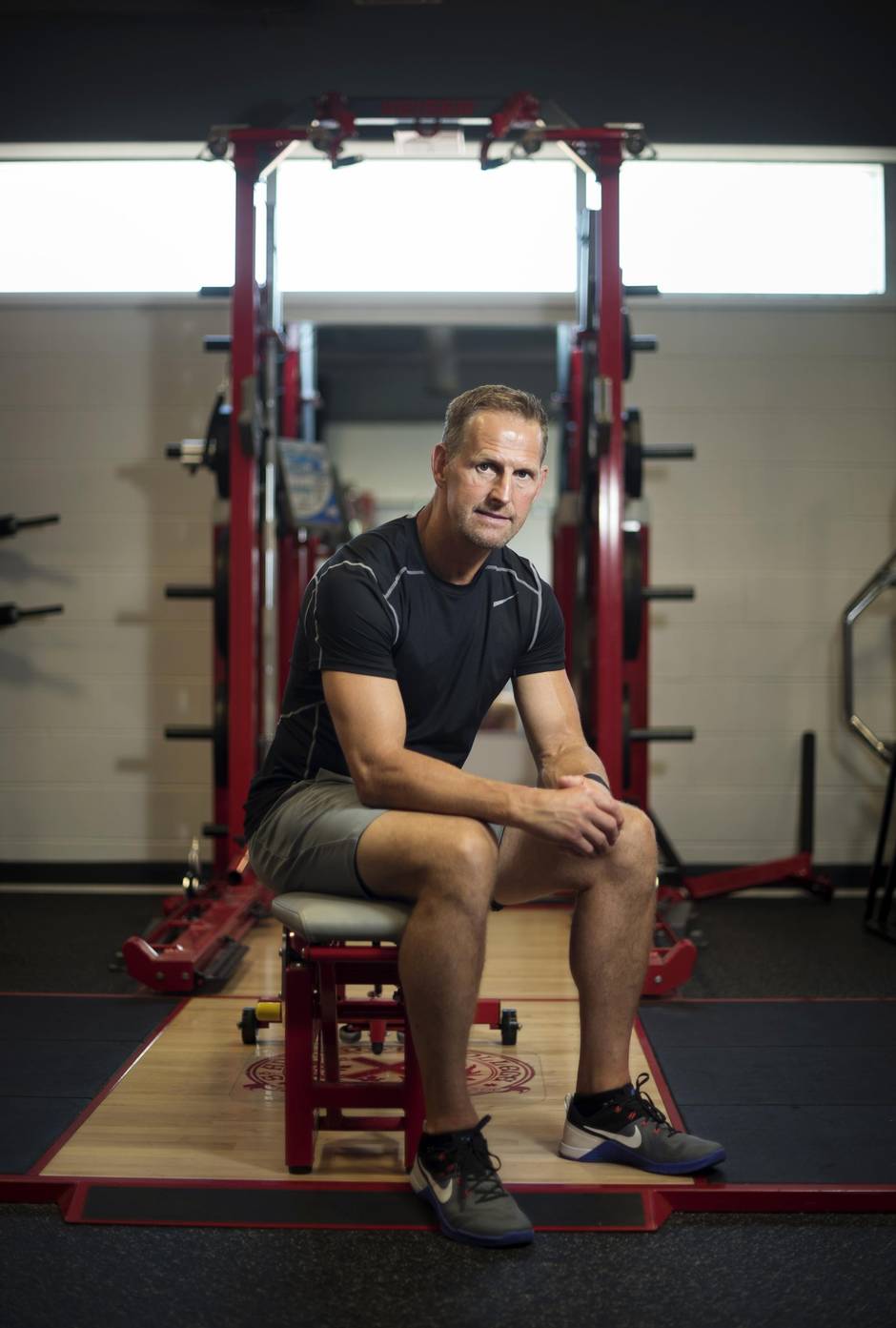
‘Pick the steepest hill’
At the NHL scouting combine a week before the draft, McDavid finished in the top 10 in only two of the 15 tests that measure agility, fitness and strength. Jack Eichel, the muscular, broad-shouldered forward picked next by the Buffalo Sabres, ranked among the leaders in seven categories. The only player to win as many as three wasn’t selected until the fourth round.
It makes one wonder what those results mean, and what they have to do with identifying a future superstar. “A lot of guys who test well never make it in the NHL, and guys who do extremely well in the NHL are often not the top guys in the tests,” Roberts said.
As an 18-year-old, Andrew Ference did not receive an invitation to participate in the predraft testing that took place at the time he was breaking into the NHL. He was so disappointed that he had tests conducted on his own at the University of Alberta, and sent the results to all 30 teams. Shortly after that, the Penguins chose him in the eighth round of the 1997 draft.
“I had a really good junior career and a lot of success, and was frustrated about the way Central Scouting worked,” said Ference, now 36 and about to start his 18th NHL season. “I wrote almost out of desperation. I needed to get my foot in the door and get noticed somehow.”
Despite being undersized at 5-foot-11 and 185 pounds, Ference cobbled together a noteworthy career. A fitness buff, the Oilers’ captain supplements his offseason training with activities that help him keep in shape. On any given day, he can be found leading free exercise classes, running trails, hopscotching across rocks in a dry creek bed, paddling a kayak or peddling a mountain bike.
“I pick the steepest hill I can find,” he said. “It teaches me how to deal with tired legs. I will never feel that exhausted in a hockey game.”
Ference also occasionally trains with skiers and triathletes, hangs upside down from the ceiling in a contraption he fashioned himself to increase core strength, and clambers atop fence rails to improve his balance.
“I like what other things and sports offer me,” he said. “I have learned a mishmash of stuff from other athletes. I don’t touch a lot of heavy weights. What I do is more about powerful, natural movements. It is more dynamic than concentrating on any one muscle.”
The drive to be in top shape is relatively new to hockey. The great goalie Gump Worsley was nearly as famous for his beer belly as for heroics in net; Gretzky was a bare wisp who disliked lifting weights; Grant Fuhr had a cocaine addiction when he backstopped some of Edmonton’s great teams in the 1980s.
“Around 1979-80, things really started to change in terms of off-season conditioning for players,” said Kevin Lowe, a seven-time all-star who won five Stanley Cups with the Oilers and one with the New York Rangers. “Mark Messier and I enjoyed doing it, but I remember one older veteran saying to us, ‘What are you trying to do by keeping in shape? Embarrass us?’ ”
Now 56 and vice-chairman of the Oilers Entertainment Group, Lowe ran, rode a bicycle and lifted weights on his own to stay in shape.
“I really admire the way kids are doing it today, and I am envious of what they have at their disposal,” he said.
A forward who won two Stanley Cups with the Oilers, Dave Lumley scored 20 goals and had 58 points in 1979-80, his first full season in the NHL. Then he spent the summer partying on Cape Cod, and returned to Edmonton just in time for training camp.
“You know that extra 25 pounds that was supposed to help me in the corners?” he said. “I had to be able to get to the corners first for them to help me.” After a strong showing as a rookie, Lumley had seven goals and nine assists in his sophomore campaign. “I was in the doghouse the whole year,” recalled Lumley, 61, “but I had the best tan in the NHL.”
Roberts started training Stamkos following his first season in the league. They had been teammates with the Tampa Bay Lightning in Stamkos’ rookie season.
“I was 18 and he was 42, but we developed a relationship,” Stamkos said. “I could see first-hand how he took care of his body, and that resulted in a long and successful career.”
Stamkos went from scoring 46 points in his first year to scoring 95 in the next after spending the summer under Roberts’ supervision. “There were a lot of reasons for the way I blossomed, but that is definitely one of them,” he said.
Stamkos shared the ice with McDavid at the rink, and has been impressed. “He is obviously a special talent and knows what it takes to be a professional,” he said. “One thing I will say is that he has an advantage from working with Gary for a few years now. That is going to help him a lot.”
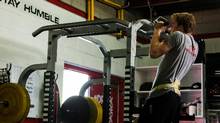
‘He doesn’t slow down’
One day near the end of July, four summers after he began training with Roberts as a wiry 10th-grader, McDavid used a trap bar to deadlift 405 pounds. A few weeks later, he did three repetitions at 455.
“We don’t have a goal set for him, but we are gradually watching the progression of his strength, maturity and attitude toward preparation,” Roberts said. “There is a big learning curve, but he has excelled at every level and there is no reason to think he won’t in the NHL. I am confident he will do very well. He looks very good in the weight room and with his conditioning. He is turning into a pro.”
From Monday through Friday throughout the summer, McDavid worked out with Roberts at the exclusive prep school with a campus that sprawls across 110 acres. As highly regarded as McDavid is, he kept a low profile as he trained beside Stamkos and other veterans, fearing they would consider him cocky.
“It’s not like I have accomplished much at this point [compared to them],” he said.
Two afternoons a week, McDavid visited an organic grocery with a handful of Roberts’ other disciples. With help from a holistic nutritionist, they shopped carefully to be certain they ate smart. During the week, a chef and four assistants prepared 80 to 100 meals a day to serve to Roberts’ clients, and made box lunches for some of them to take home.
“Everyone loves wings, but that kind of stuff you have to look out for,” McDavid said. “It’s not much of a problem for me because I enjoy eating healthy food, and so does the rest of my family. Every now and then, of course, I have a cheat day.”
At the end of August, McDavid’s percentage of body fat, which Roberts determines by pinching his skin all over with 11 calipers, was 12 per cent. Anything between 10 to 12 Roberts considers optimum.
“As long as I have been doing this, I don’t think I have ever had a player below 9 per cent,” he said. “You want guys to have a little fat on their body. You don’t want them to be too lean.”
McDavid has grown bigger and stronger this summer, but his greatest weapons are his speed and sleight-of-hand. “I don’t know that this training will change what I do too much,” McDavid said.
“I am never going to be much of a physical presence. For me, it’s more about taking my strength and finding a way to use it as an advantage.”
Since he was nine years old, he has trained with Joe Quinn, a Toronto-area hockey instructor, to sharpen his stickhandling skills. This summer, McDavid was one of 30 NHL players to participate in clinics with Quinn, skating with a puck around, through, under and over a device he invented called the Power Edge Pro.
McDavid was the youngest player there, and easily the fastest. “The first time most players attack the circuit, they are skating at 30 to 40 kilometres an hour,” Quinn said. “By the second or third time, they are down to seven to 10 kilometres per hour. I expect them to fly right through it, because Connor can. He doesn’t slow down.”
He continued to work out even while recovering from a broken finger last winter, concentrating mainly on conditioning, including extensive skating drills. During the week of the draft, McDavid awoke early every morning to exercise in his hotel room in Fort Lauderdale, Fla. On Saturdays, he did light aerobics that kept his heart in the range of 140 to 150 beats per minute. Sunday was the only day of rest.
“He is as good as he is because he has made a commitment,” Roberts said.
McDavid has never imagined doing anything but playing in the NHL. That has helped fuel his ambition through this summer of backbreaking work under Roberts, and the naps that followed.
“I think as you progress, you realize more and more that it is a necessity,” McDavid said. “There is just a point when you know you need to start going at it, and you need to get it done.”
